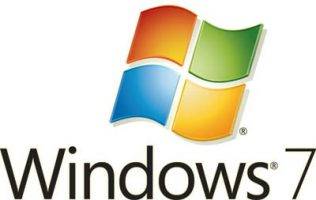Posted by: TAZ Networks on May 3, 2019 at 8:00 am

Plan now to upgrade from Windows 7.
All good things must end. Windows 7 is no exception.
January 14, 2020 is the end of extended support for Windows 7. That means no more security updates, and Microsoft will no longer provide support for Windows 7 issues. Per Microsoft, for one year after that date, support in the form of “Microsoft online Knowledge Base articles, FAQs, troubleshooting tools, and other resources, are provided to help customers resolve common issues.”
But all the Knowledge Base articles in the world won’t save you from exploited vulnerabilities once security patches end.
It’s our very firm advice that businesses of all sizes, including small businesses, start planning now to upgrade from Windows 7.
Why are we telling you about Windows 7 end-of-life now, when it’s still several months away?
While stats vary by web site, according to NetMarketShare.com, Window 7 still has higher market share than Windows 10 and Windows 8.1 combined.
So that means a lot of people are in for a rude awakening if they don’t start planning now to upgrade from Windows 7. Depending on how many computers you need to upgrade, this can be a major project.
Only you know your company culture and budget. How much lead time is needed to determine the budget for projects? How much red tape do you have to push through to get approvals?
As we’ve said before, when it comes to upgrades, “A measured and planned approach can help minimize downtime and keep your network secure.” Start your planning now to achieve that “measured and planned approach.”
FYI: Windows 8.1 and Windows 10 Have End-of-Service Dates Too
Mainstream support for Windows 8.1 just ended in January. That means it will not get any new features or non-security updates, but security updates and paid support are still available until January 10, 2023.
Windows 10 is a little different. Microsoft will release “feature updates” twice a year, and security and other “quality” updates periodically in between. Think of each feature update as a new “version.” Keep up with these feature updates as well as, obviously, the security updates. This is required to help keep your device secure and have it remain supported by Microsoft.
What about Windows XP? Yes, we still have clients running Windows XP. While rare, these are usually cases where the operating system was sold pre-loaded onto a computer that controls specific machinery. All three items – computer, software, and machine – are tied together. Replacing the machinery is cost-prohibitive, so the computer is stuck running Windows XP. In these rare cases, we do not allow the machine to connect to the internet at large. In fact, that is the main rule for Windows XP: never, ever allow these computers to connect to the internet.
The same will apply to Windows 7 after January 14, 2020.
Your Next Steps to Upgrade from Windows 7
The first step is knowing where you are. How many computers do you have running Windows 7? Don’t forget to count any computers running machinery, not just those used by office and sales staff.
Next, look at your hardware replacement plan. Which of those computers running Windows 7 are due to be replaced before January 14, 2020? Hint: the standard warranty for business computers is 3 years. We recommend replacing once the warranty is expired. So, the answer should be: most of them.
If you don’t have a hardware replacement plan, put one together. Again, most office workstations have a useful life of about 3 years. Servers can go for 5 or so. Other options are leased equipment, and cloud servers. (We can help you sort through these options if needed.)
Once you know what needs replacing, develop your timeline and budget for replacements and upgrades.
While we hope that most modern machinery software avoids the Windows XP problems outlined above, it may be possible that you have Windows 7 running on equipment that cannot be replaced. Plan now to isolate and secure those machines so that they do not have Internet access or cannot infect other data on your computer network.
It’s never too early to start planning. Once set into place, plans can be adjusted if needed. But if you don’t have a plan, you could be caught off-guard with a bunch of computers on your network that are suddenly a whole lot less secure.
Need help? Contact us today about a network assessment and action plan. Fill out the form at the right or call 810-355-2280, option 1.